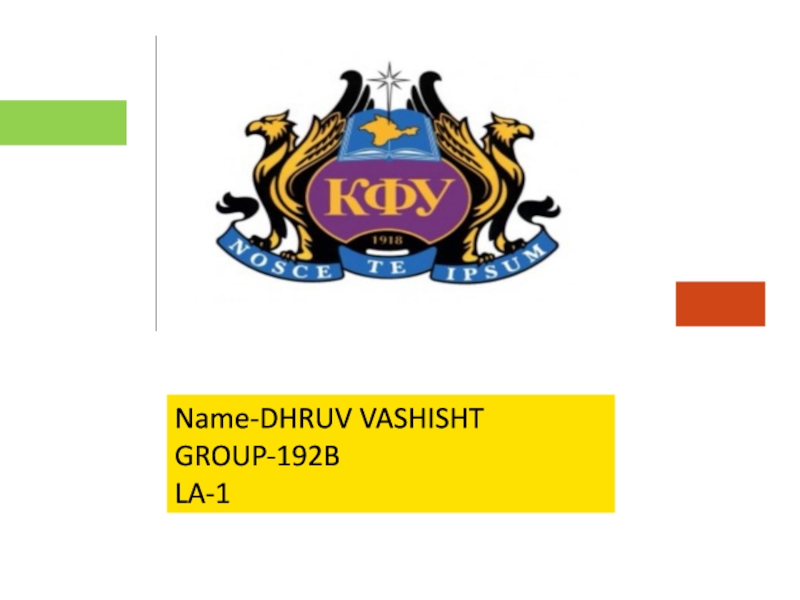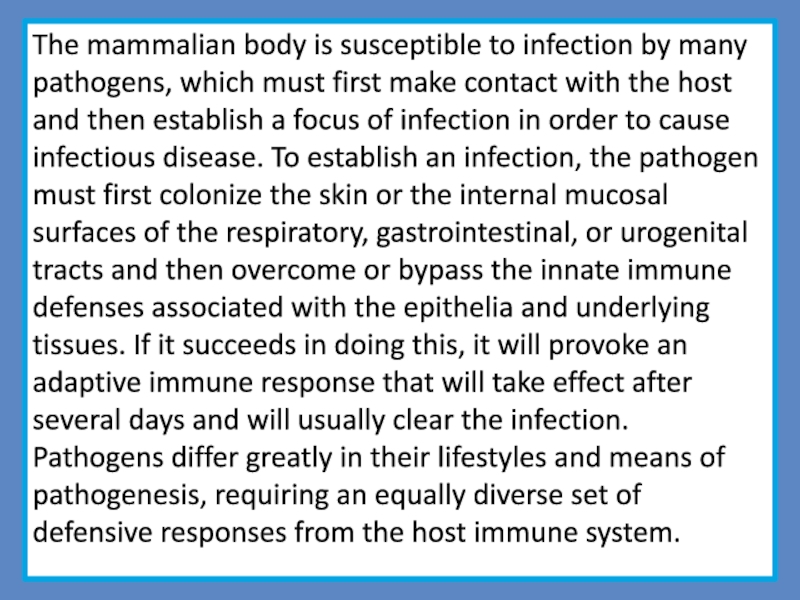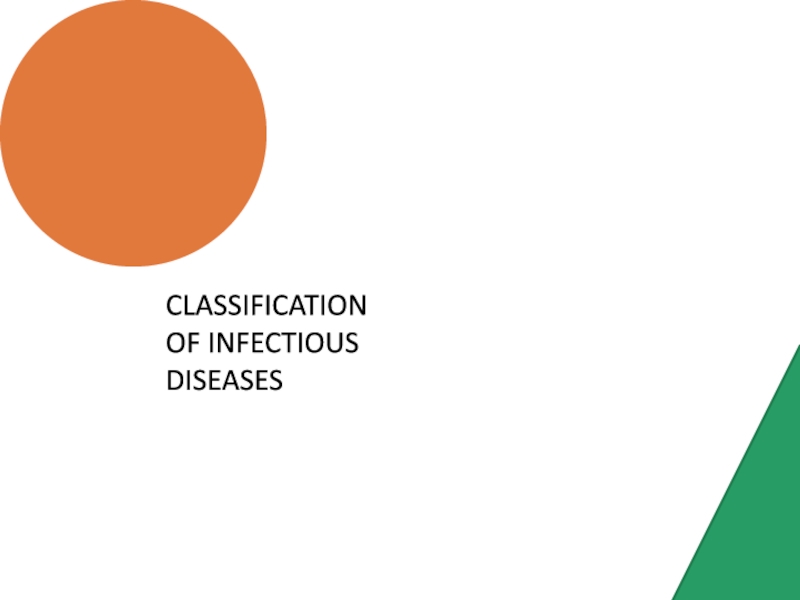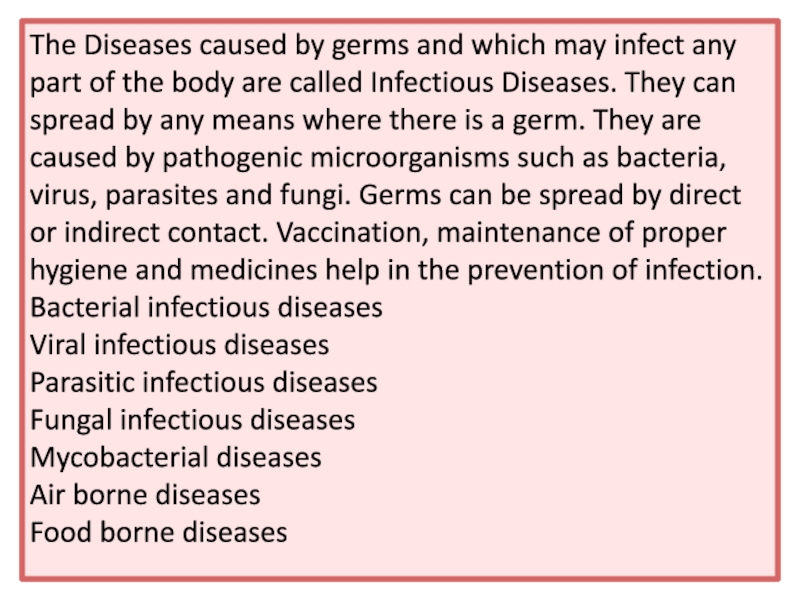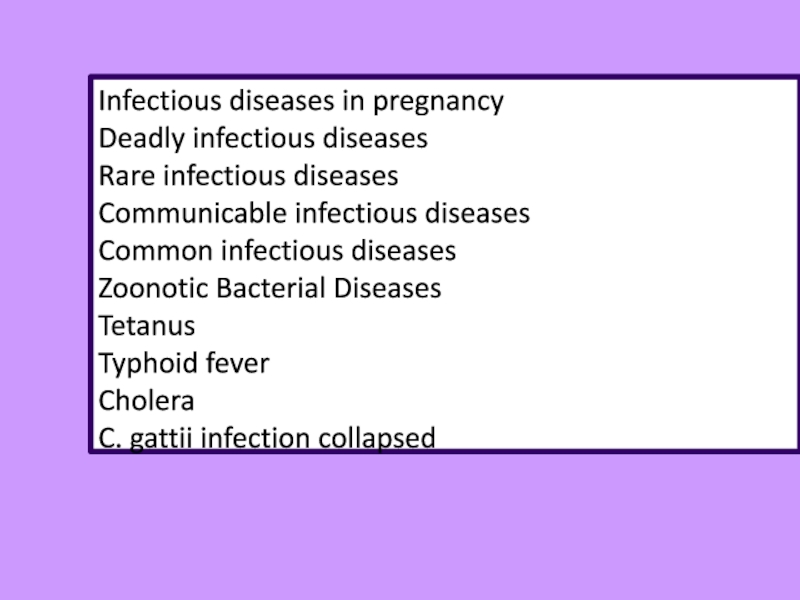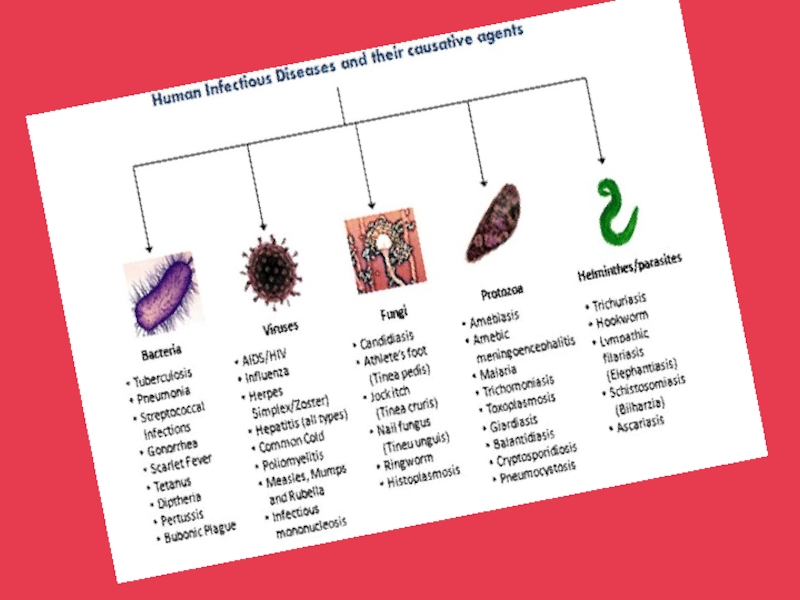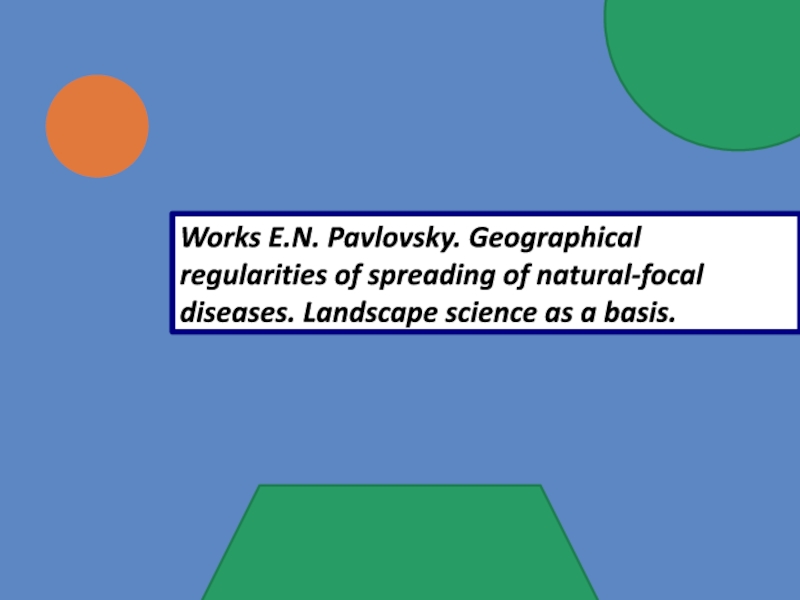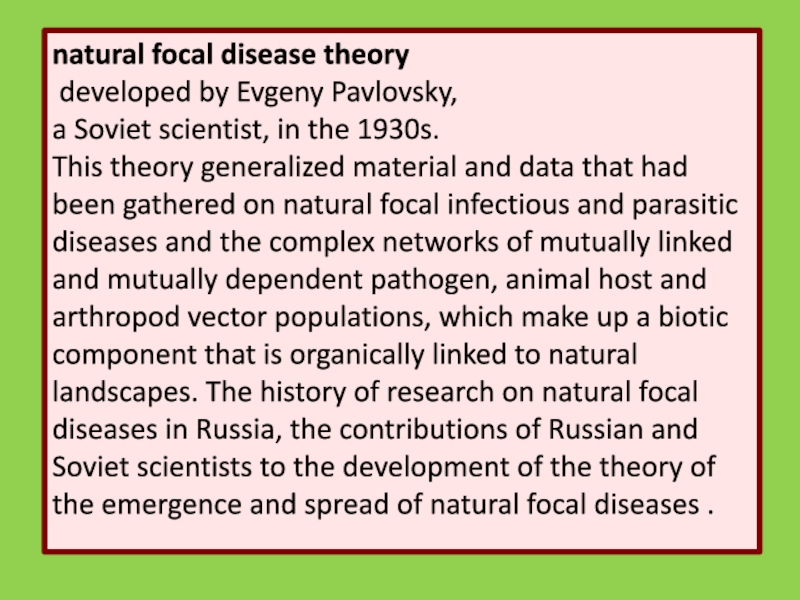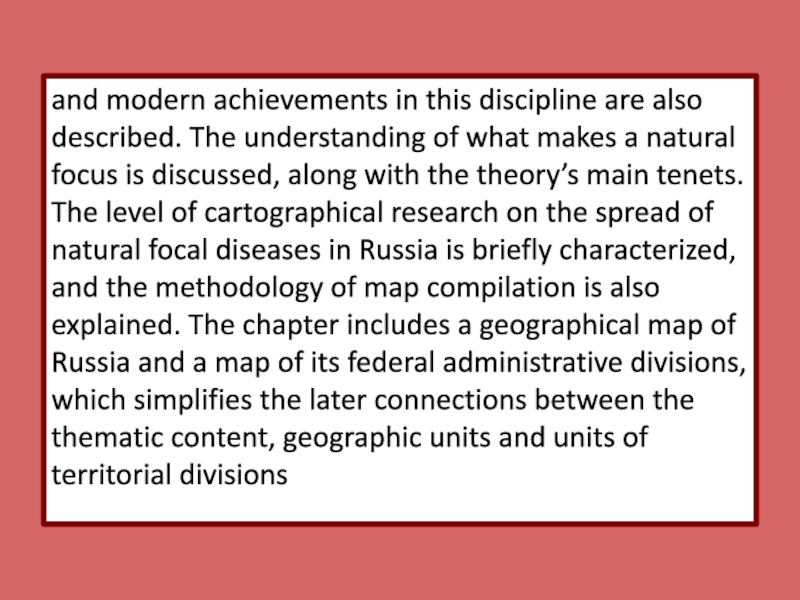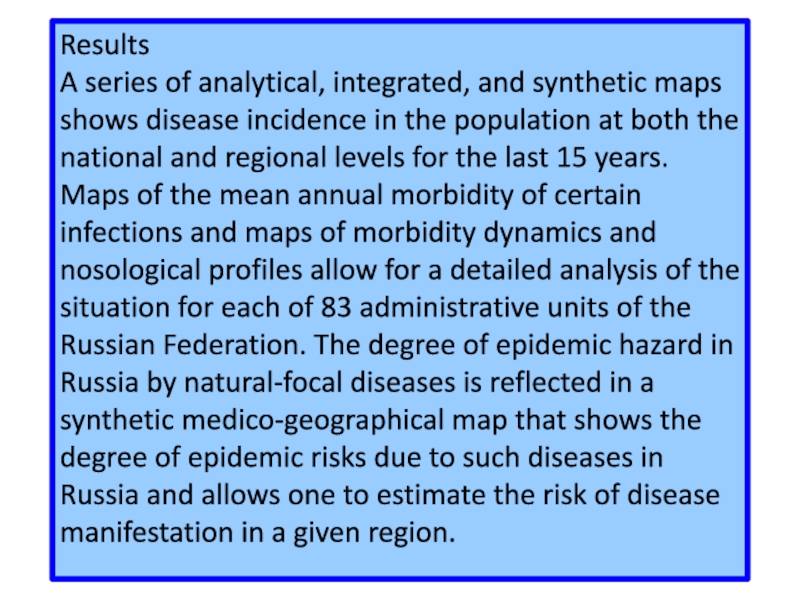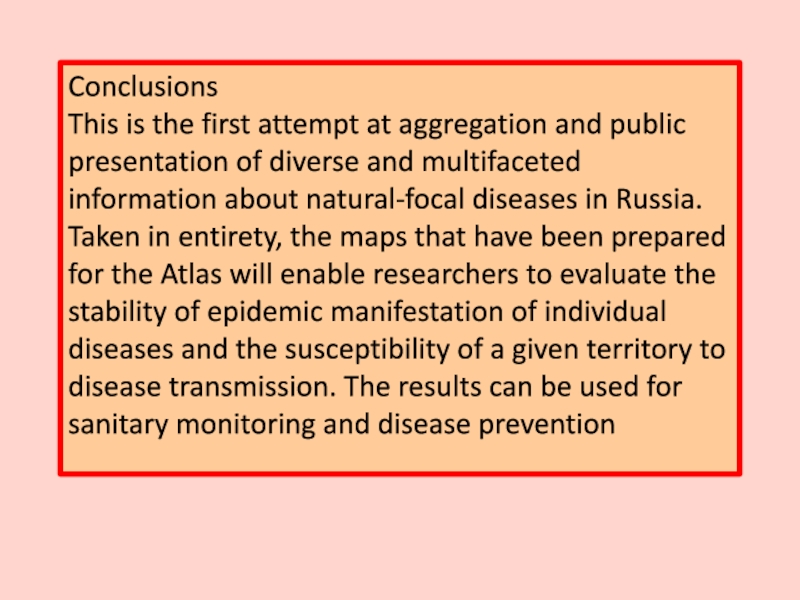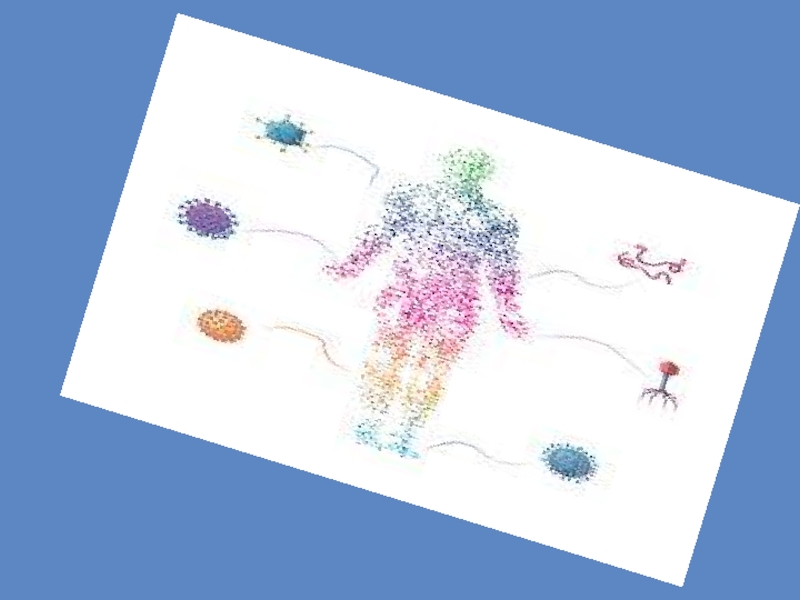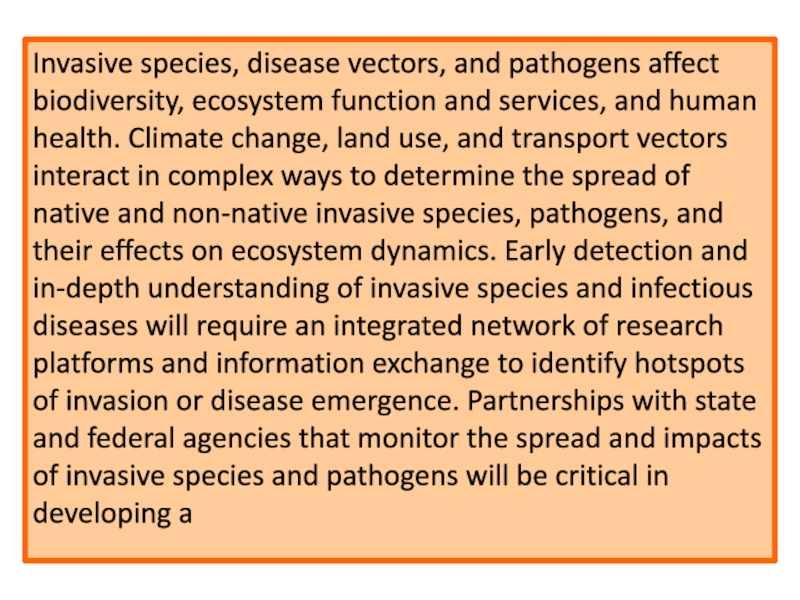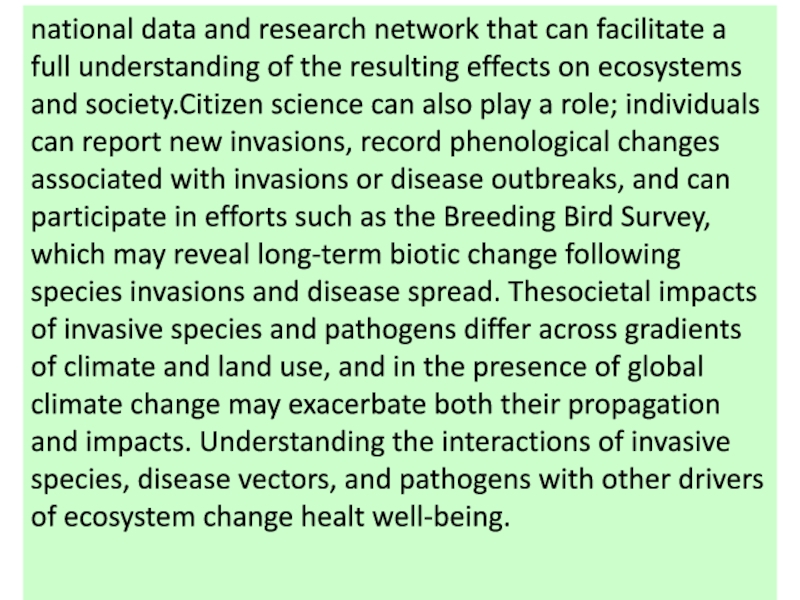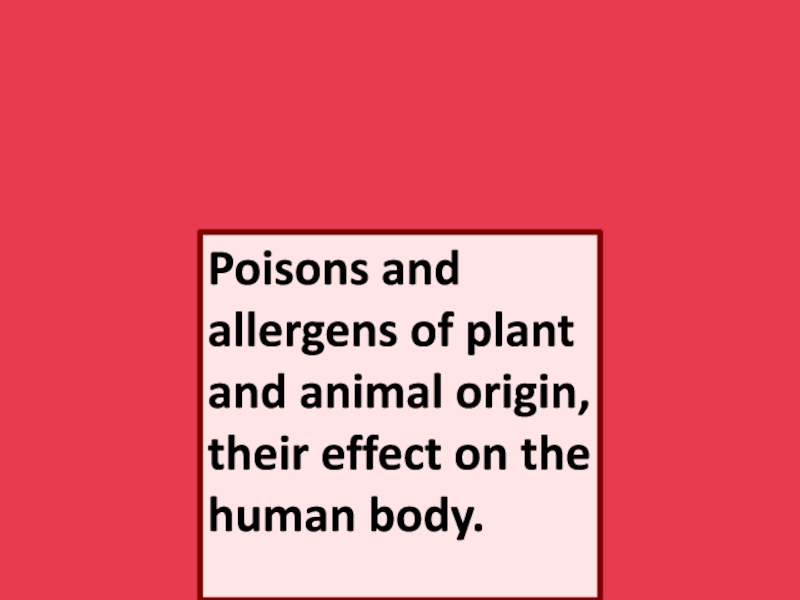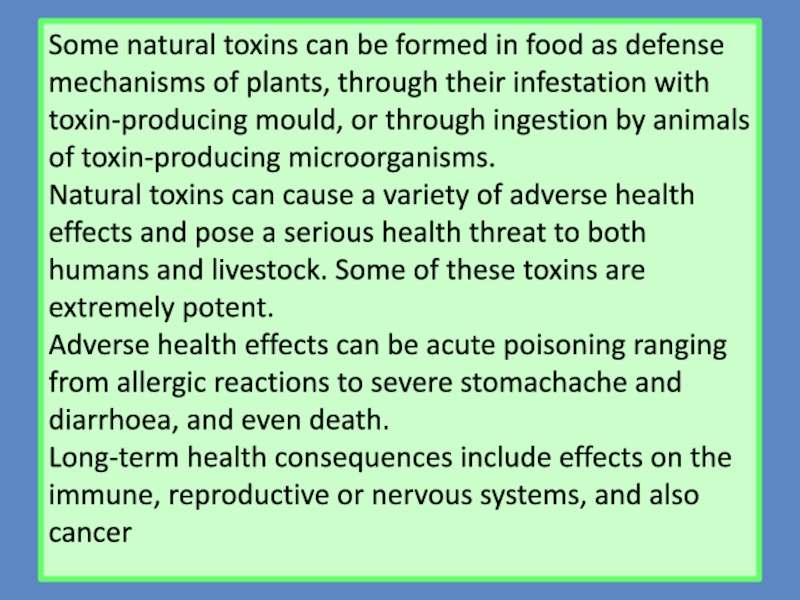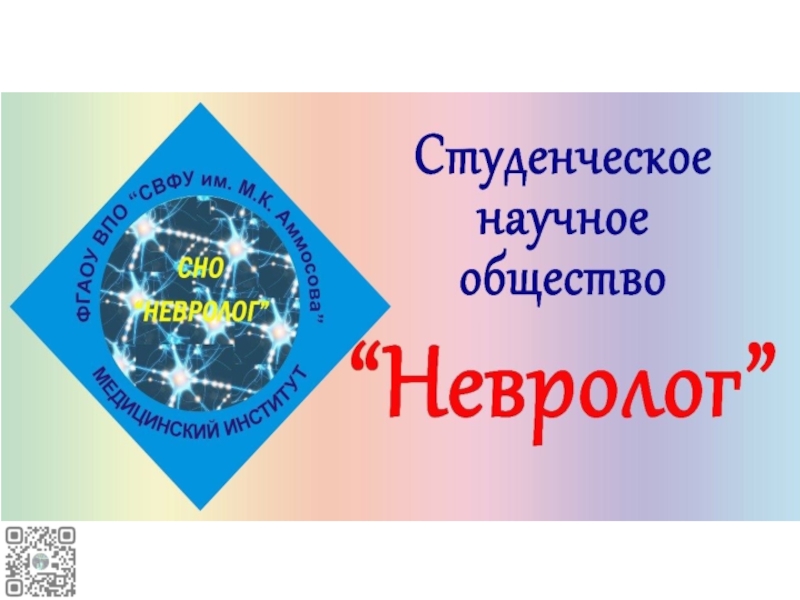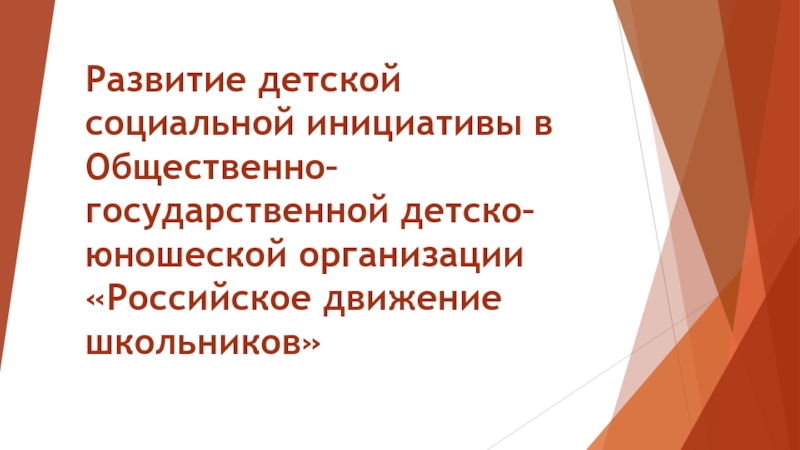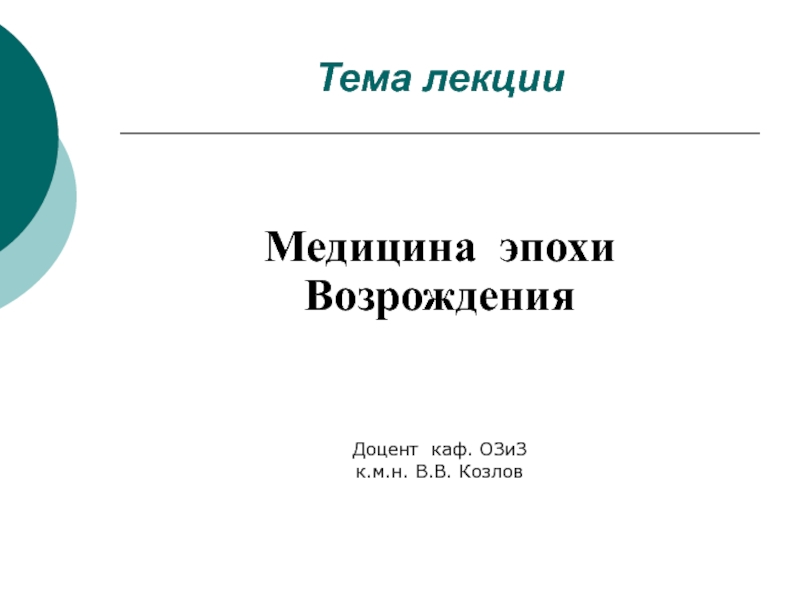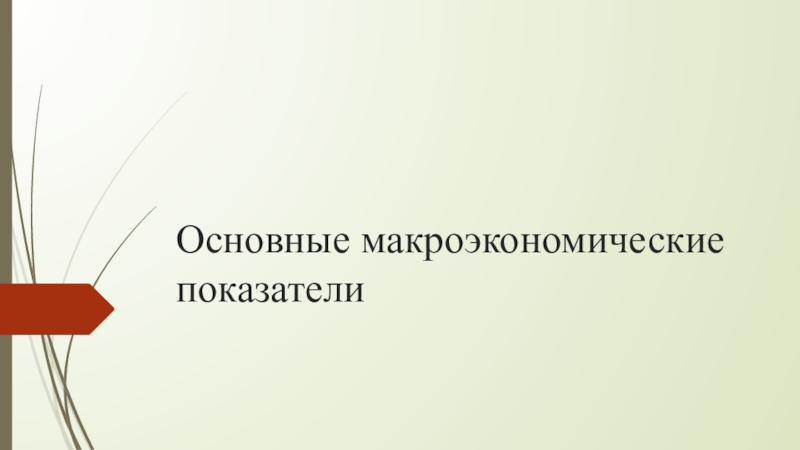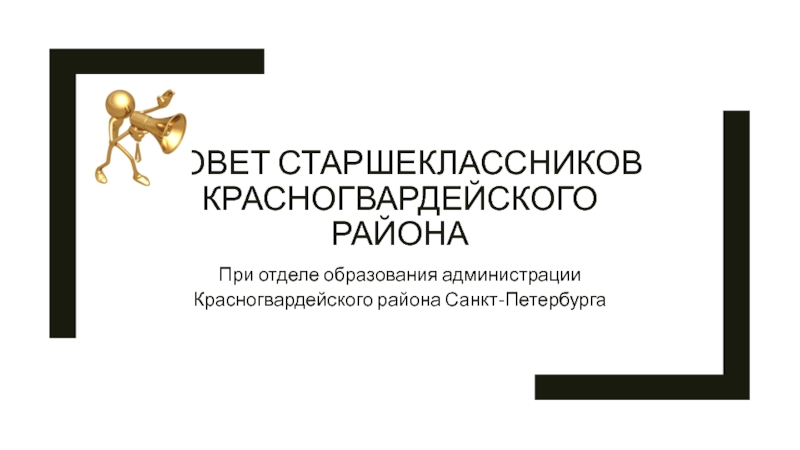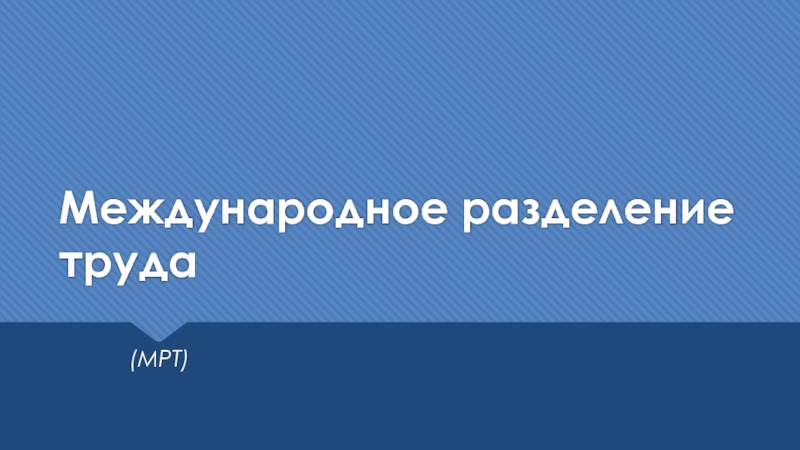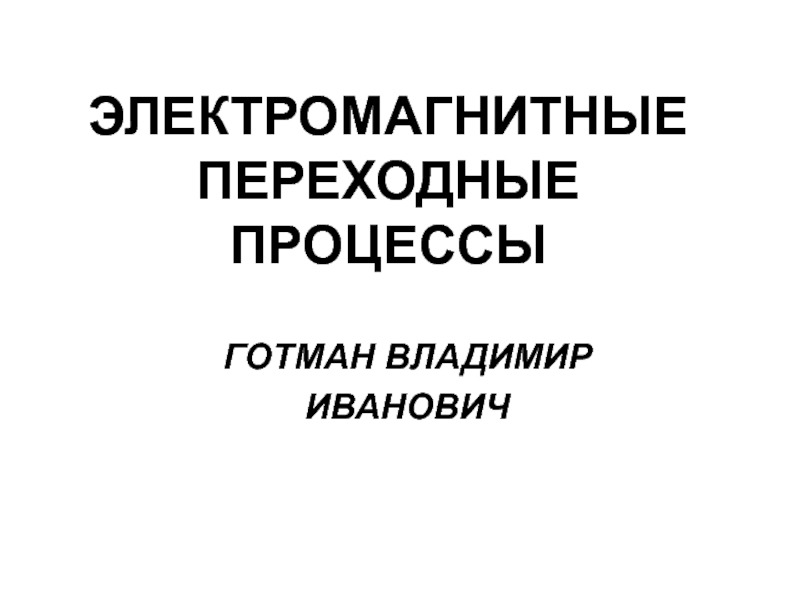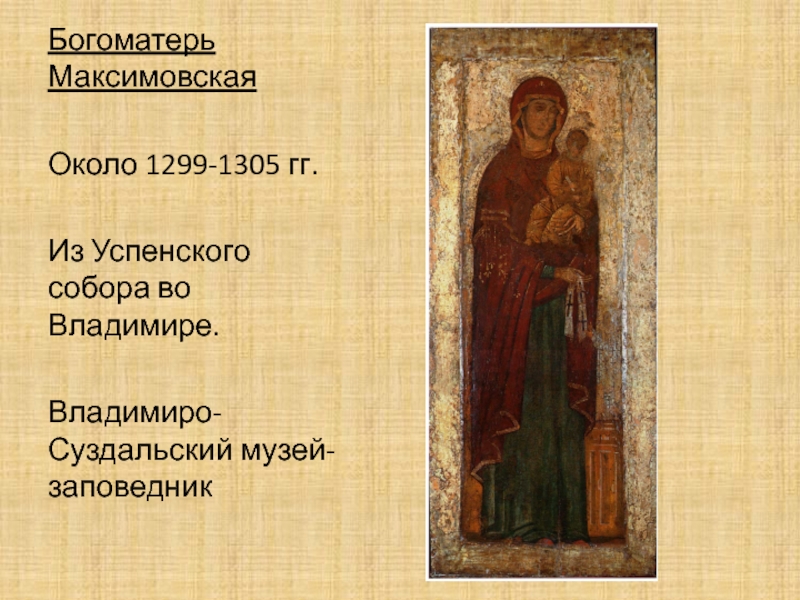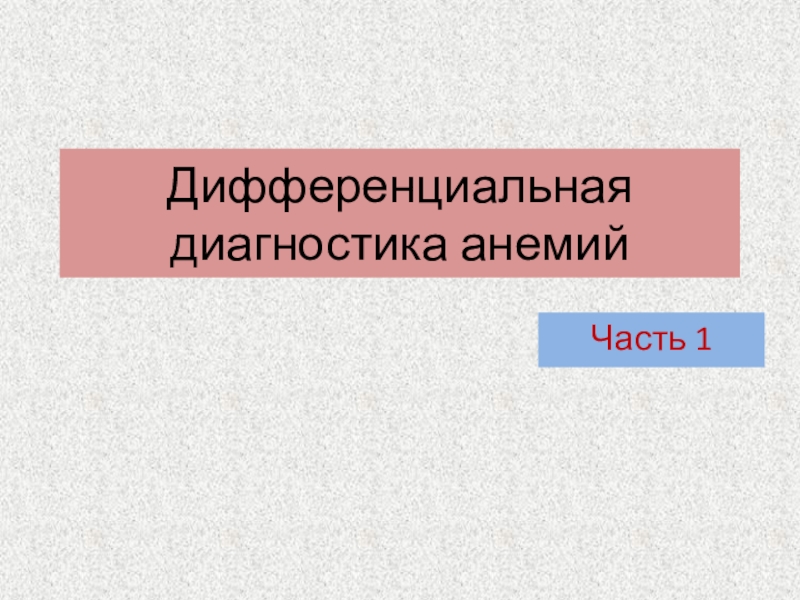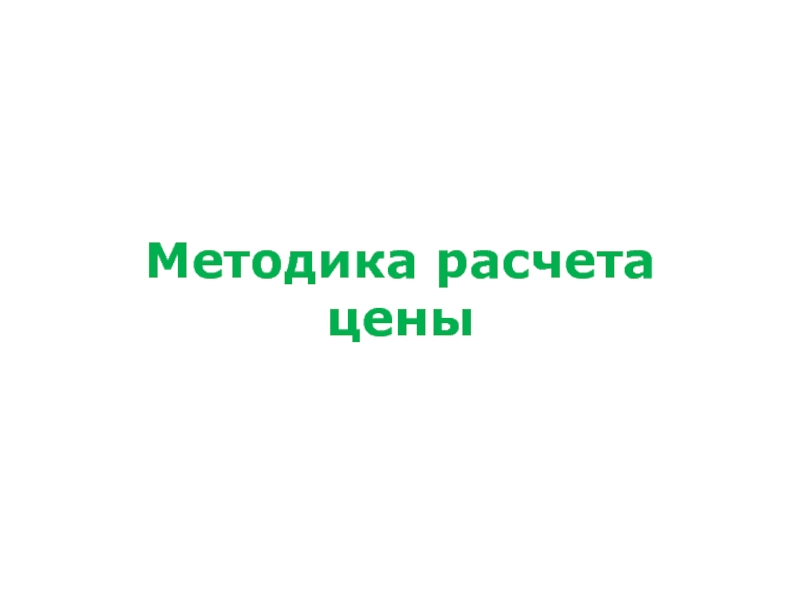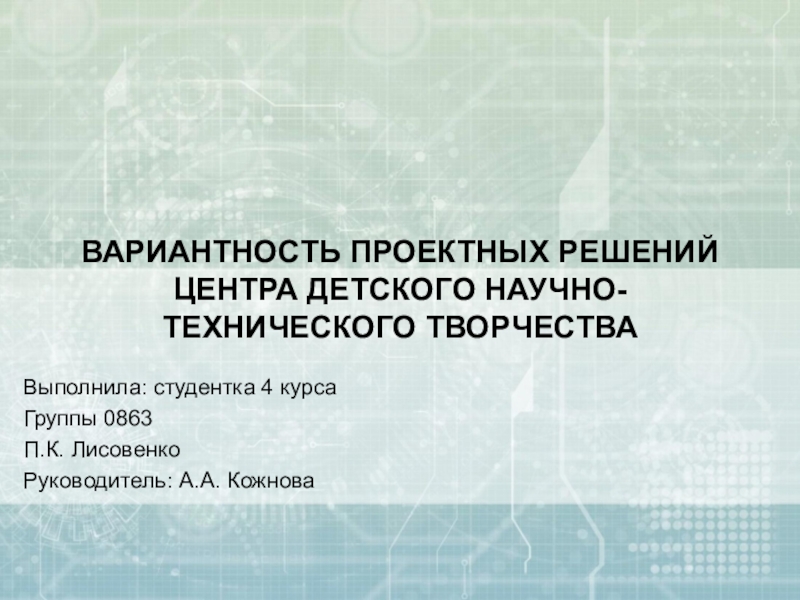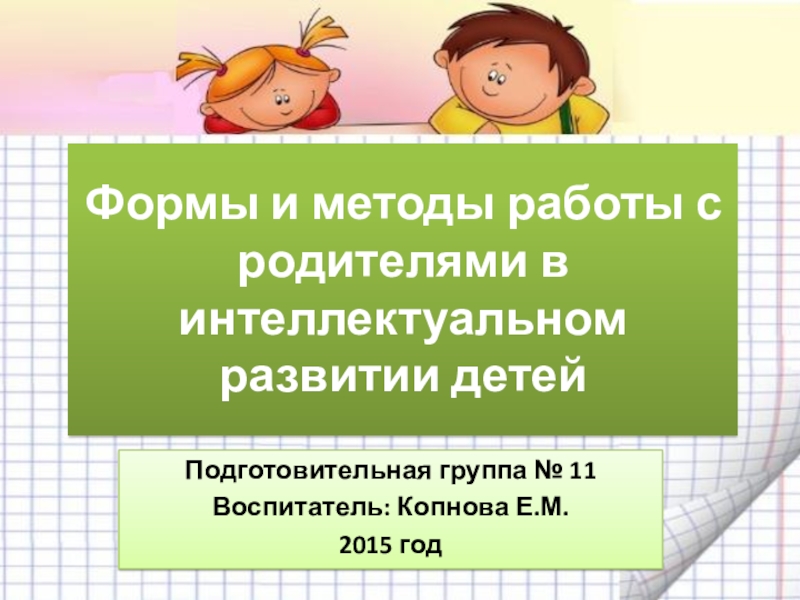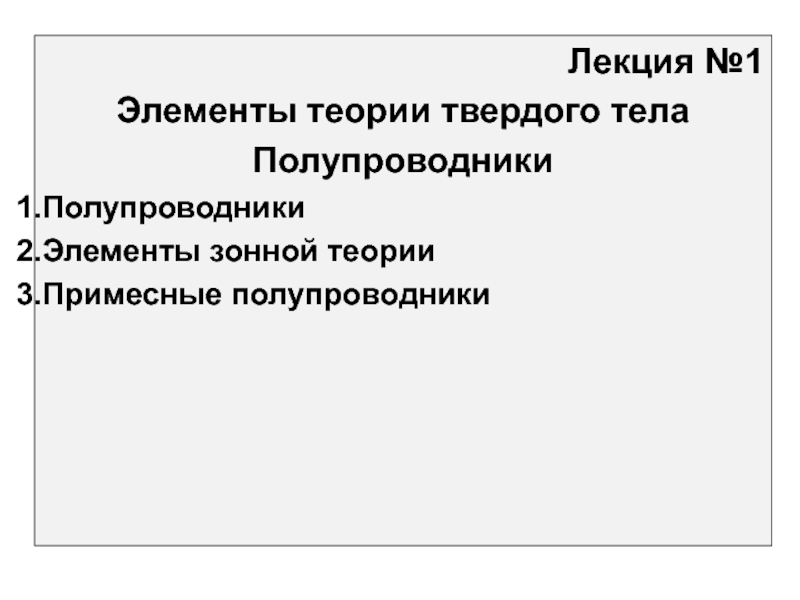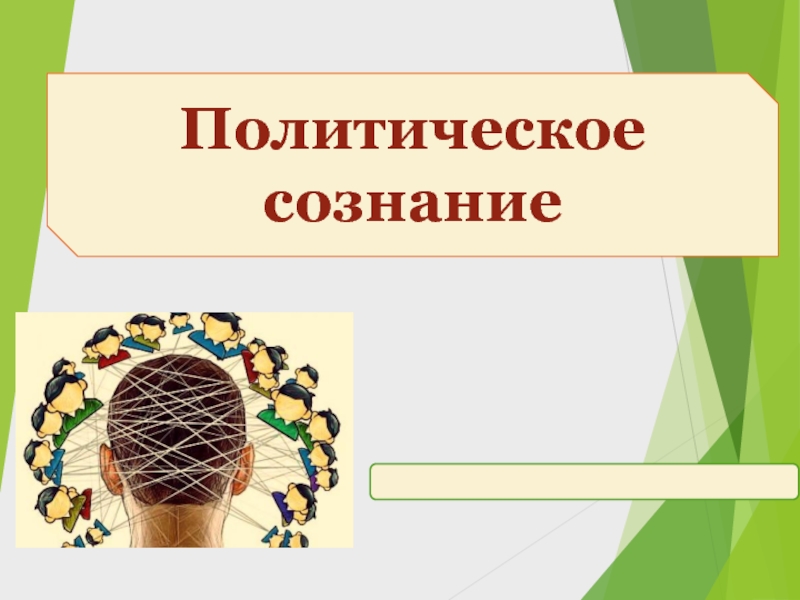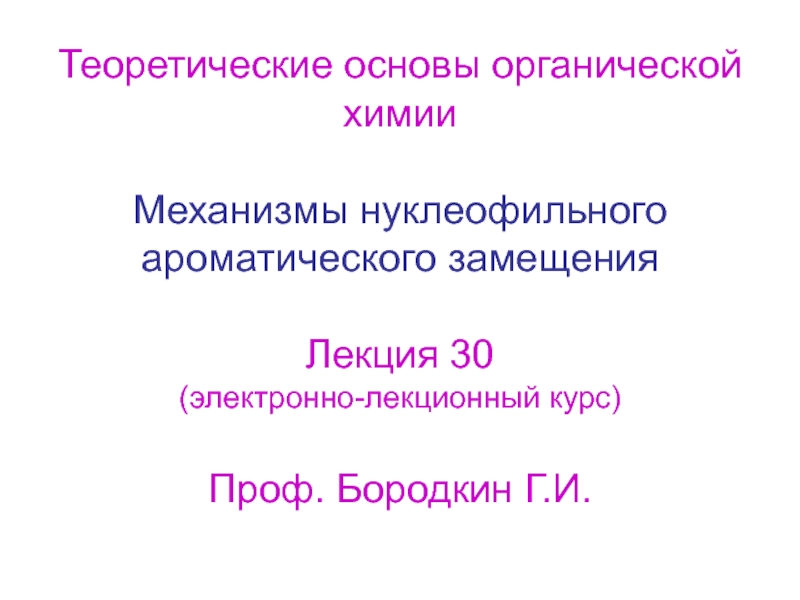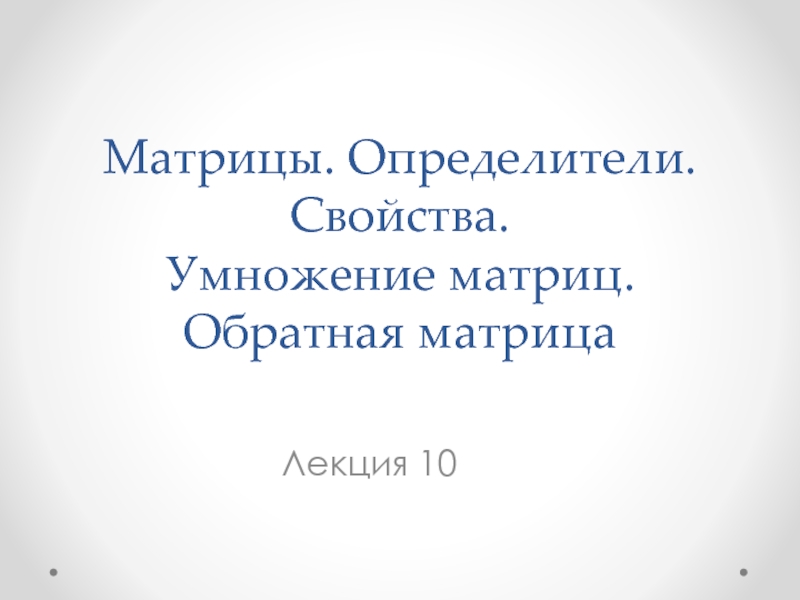Слайд 1Name-DHRUV VASHISHT
GROUP-192B
LA-1
Слайд 2
Information
about
disease
agents
Слайд 3The mammalian body is susceptible to infection by many pathogens,
which must first make contact with the host and then
establish a focus of infection in order to cause infectious disease. To establish an infection, the pathogen must first colonize the skin or the internal mucosal surfaces of the respiratory, gastrointestinal, or urogenital tracts and then overcome or bypass the innate immune defenses associated with the epithelia and underlying tissues. If it succeeds in doing this, it will provoke an adaptive immune response that will take effect after several days and will usually clear the infection. Pathogens differ greatly in their lifestyles and means of pathogenesis, requiring an equally diverse set of defensive responses from the host immune system.
Слайд 4CLASSIFICATION
OF INFECTIOUS
DISEASES
Слайд 5The Diseases caused by germs and which may infect any part of
the body are called Infectious Diseases. They can spread by any
means where there is a germ. They are caused by pathogenic microorganisms such as bacteria, virus, parasites and fungi. Germs can be spread by direct or indirect contact. Vaccination, maintenance of proper hygiene and medicines help in the prevention of infection.
Bacterial infectious diseases
Viral infectious diseases
Parasitic infectious diseases
Fungal infectious diseases
Mycobacterial diseases
Air borne diseases
Food borne diseases
Слайд 6Water borne diseases
Mosquito and tick borne diseases
Blood borne infectious diseases
Childhood
infectious diseases or pediatric infectious diseases
Geriatric infectious diseases
Nosocomial infections or
hospital acquired infections
Sexually transmitted diseases
Allergic infectious diseases
Neuro infectious diseases
Transplant infectious diseases
Topical infectious diseases
Inflammatory infectious diseases
Opportunistic infections
Слайд 7Infectious diseases in pregnancy
Deadly infectious diseases
Rare infectious diseases
Communicable infectious diseases
Common
infectious diseases
Zoonotic Bacterial Diseases
Tetanus
Typhoid fever
Cholera
C. gattii infection collapsed
Слайд 9Works E.N. Pavlovsky. Geographical regularities of spreading of natural-focal diseases.
Landscape science as a basis.
Слайд 10natural focal disease theory
developed by Evgeny Pavlovsky,
a
Soviet scientist, in the 1930s.
This theory generalized material and
data that had been gathered on natural focal infectious and parasitic diseases and the complex networks of mutually linked and mutually dependent pathogen, animal host and arthropod vector populations, which make up a biotic component that is organically linked to natural landscapes. The history of research on natural focal diseases in Russia, the contributions of Russian and Soviet scientists to the development of the theory of the emergence and spread of natural focal diseases .
Слайд 11and modern achievements in this discipline are also described. The
understanding of what makes a natural focus is discussed, along
with the theory’s main tenets. The level of cartographical research on the spread of natural focal diseases in Russia is briefly characterized, and the methodology of map compilation is also explained. The chapter includes a geographical map of Russia and a map of its federal administrative divisions, which simplifies the later connections between the thematic content, geographic units and units of territorial divisions
Слайд 12Methods
The mapping is based on medical statistics data. The Atlas
contains a series of maps on disease incidence, long-term dynamics
of disease morbidity, etc. In addition, other materials available to the authors were used: mapping of the natural environment, field data, archival materials, analyzed satellite images, etc. The maps are processed using ArcGIS (ESRI) software application. Different methods of rendering of mapped phenomena are used (geographical ranges, diagrams, choropleth maps etc.).
Слайд 13Results
A series of analytical, integrated, and synthetic maps shows disease
incidence in the population at both the national and regional
levels for the last 15 years. Maps of the mean annual morbidity of certain infections and maps of morbidity dynamics and nosological profiles allow for a detailed analysis of the situation for each of 83 administrative units of the Russian Federation. The degree of epidemic hazard in Russia by natural-focal diseases is reflected in a synthetic medico-geographical map that shows the degree of epidemic risks due to such diseases in Russia and allows one to estimate the risk of disease manifestation in a given region.
Слайд 14Conclusions
This is the first attempt at aggregation and public presentation
of diverse and multifaceted information about natural-focal diseases in Russia.
Taken in entirety, the maps that have been prepared for the Atlas will enable researchers to evaluate the stability of epidemic manifestation of individual diseases and the susceptibility of a given territory to disease transmission. The results can be used for sanitary monitoring and disease prevention
Слайд 16Invasive species, disease vectors, and pathogens affect biodiversity, ecosystem function
and services, and human health. Climate change, land use, and
transport vectors interact in complex ways to determine the spread of native and non‐native invasive species, pathogens, and their effects on ecosystem dynamics. Early detection and in‐depth understanding of invasive species and infectious diseases will require an integrated network of research platforms and information exchange to identify hotspots of invasion or disease emergence. Partnerships with state and federal agencies that monitor the spread and impacts of invasive species and pathogens will be critical in developing a
Слайд 17national data and research network that can facilitate a full
understanding of the resulting effects on ecosystems and society.Citizen science
can also play a role; individuals can report new invasions, record phenological changes associated with invasions or disease outbreaks, and can participate in efforts such as the Breeding Bird Survey, which may reveal long‐term biotic change following species invasions and disease spread. Thesocietal impacts of invasive species and pathogens differ across gradients of climate and land use, and in the presence of global climate change may exacerbate both their propagation and impacts. Understanding the interactions of invasive species, disease vectors, and pathogens with other drivers of ecosystem change healt well‐being.
Слайд 18Poisons and allergens of plant and animal origin, their effect
on the human body.
Слайд 19Some natural toxins can be formed in food as defense
mechanisms of plants, through their infestation with toxin-producing mould, or
through ingestion by animals of toxin-producing microorganisms.
Natural toxins can cause a variety of adverse health effects and pose a serious health threat to both humans and livestock. Some of these toxins are extremely potent.
Adverse health effects can be acute poisoning ranging from allergic reactions to severe stomachache and diarrhoea, and even death.
Long-term health consequences include effects on the immune, reproductive or nervous systems, and also cancer
